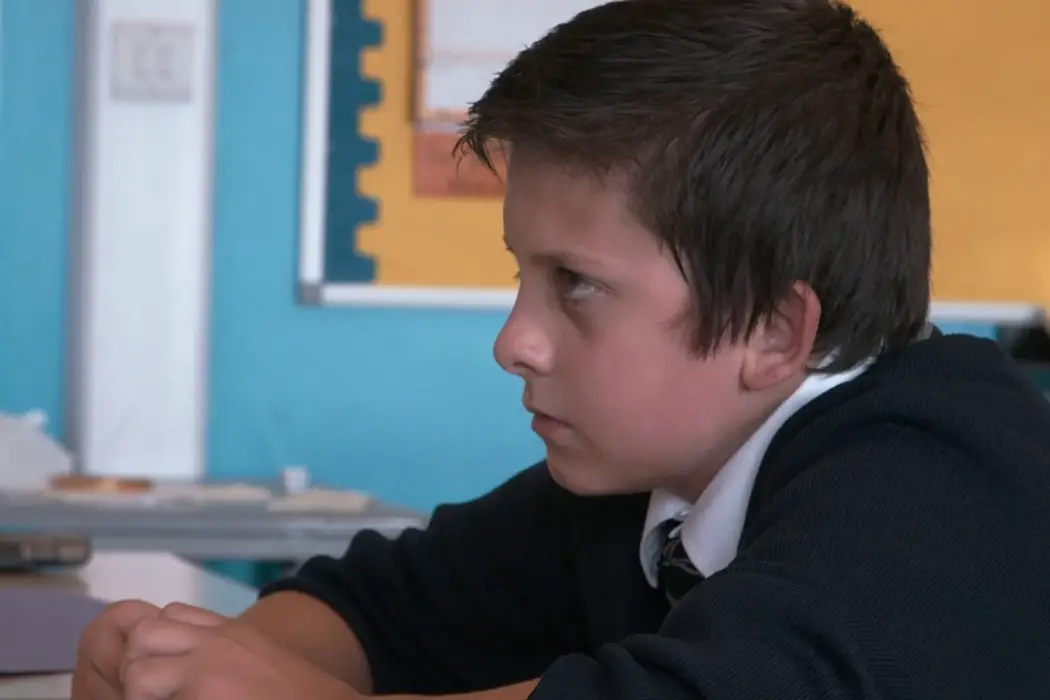H IS FOR HARRY: In Search of A Ladder

Soham Gadre is a writer/filmmaker in the Washington D.C. area.…
The inspirational story of a teacher reaching his or her students to help them succeed and elevate their low expectations of themselves, amidst the seemingly insurmountable obstacles that society erects, is the stuff of Hollywood. We’ve seen these stories multiple times, and their impact is generally favorable because children are, by and large, our favorite underdog stories. Especially poor children.
Reality vs Expectation
What these fictional narratives, however, don’t really take into consideration is that among the success of a central figure is a large number of people who’s stories don’t culminate in a happy ending. They aren’t tragic endings mind you, but just realistic. This is what documentary cinema is for. You can’t weave a shining success story through documentary because reality will never bend to your whims when systemic forces are meant to work to only benefit a select few.
In Steve James’s Hoop Dreams we follow two underprivileged kids from the Chicago projects whose dreams of being NBA stars don’t really pan out. In Amanda Wilder‘s Approaching the Elephant, a school with a radical agenda of letting kids “make up the rules” isn’t becoming a success story but rather learning from its own mistakes. In Edward Owles and Jamie Taylor’s H is for Harry, we are again confronted with the reality of at-risk children from poor neighborhoods and the teachers who make it a mission to drive them to success. The results are, as expected, muddled, difficult and humbling.

The Problem is Too Big For a Quick Solution
Harry is a student who has joined a new Secondary School in southwest London called Reach Academy. A Secondary School is essentially the equivalent of the Middle School in the United States but involving different age levels. Harry is from a lower-class family with a father who left his schooling without the ability to read. The film’s main focus is on Harry’s journey through his new school and his development to try to find a path towards a better future than his dad. On the peripheries of this, is the more systemic issues of educational inequality and income inequality.
Technological gatekeeping of access to necessities in today’s England has rendered lower-income individuals unable to escape their financial situations. This has been a recurring theme in social cinema in England of late. In Ken Loach’s I, Daniel Blake the most frustrating moments occur when Daniel, a septuagenarian who is unfamiliar with technology, struggles helplessly in trying to fill out e-forms to file for medical claims. The system keeps timing out because it takes him so long and eventually he gives up. H is for Harry makes the case that Harry’s schooling is not only important for his own personal growth but imperative to his ability to even function on a basic social level in modern society.

The Documentation of a Harsh Reality
The film tries its best to remain a “fly-on-the-wall”. It doesn’t interfere in social and political pontification on its own, but rather presents these obstacles as part of a greater system. Much like Approaching the Elephant, there is a keen focus on the way that interactions between student and teacher are like a chess match. Each individual is testing the other, adding pressure and making sure the support is there, to try to climb higher. Harry wants to learn, he wants to succeed, but because school bores him, he must cause problems to make sure he’s heard and listened to. Children and teenagers generally resort to rebellious behavior in classes when they don’t know any other way to get attention.
Like in Hoop Dreams, we’re taken on a journey with a student who faces the ups and downs many of us do and lingers in self-doubt, self-pity, and frustration that must be overcome to ultimately achieve success. But what is success? This is where the reality of H for Harry makes it compelling. Harry’s story isn’t a Hollywood triumph. It’s a long journey that never really ends. It has its moments of anguish and its small victories, but the war on poverty and inequality in social status and education is not a battle that can be won here. It takes massive social movement. Harry’s story is but an acknowledgment of the realistic expectations such a battle will force us to accept.
H is for Harry: In Conclusion
H for Harry is a slice-of-life film, a response to the triumphant Hollywood narratives of student-teacher feel-good stories that make everything look easy. It’s hopeful but also humbling, and gives us a view of the thoughts, ideas, and mental battles that Harry and his teacher must navigate to find a way for him to move forward. It’s not a documentary that gives us answers, but gives us a chance to put into context what an uphill battle it really is for low-income students just to get on the same playing field as those with wealth and privilege, let alone succeed along with them.
Watch H for Harry
Does content like this matter to you?
Become a Member and support film journalism. Unlock access to all of Film Inquiry`s great articles. Join a community of like-minded readers who are passionate about cinema - get access to our private members Network, give back to independent filmmakers, and more.
Soham Gadre is a writer/filmmaker in the Washington D.C. area. He has written for Hyperallergic, MUBI Notebook, Popula, Vague Visages, and Bustle among others. He also works full-time for an environmental non-profit and is a screener for the Environmental Film Festival. Outside of film, he is a Chicago Bulls fan and frequenter of gastropubs.













